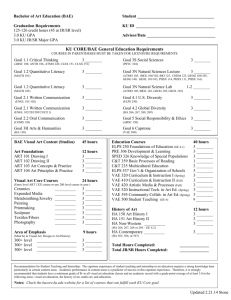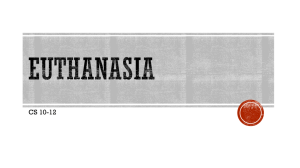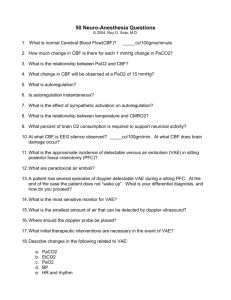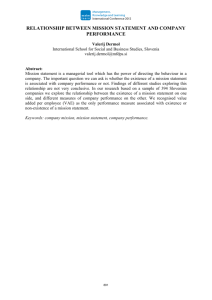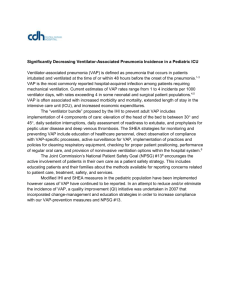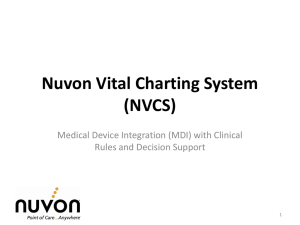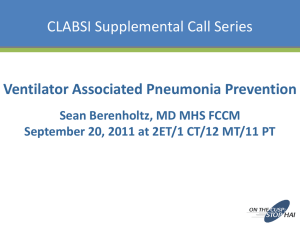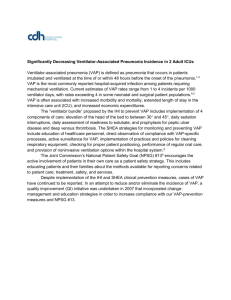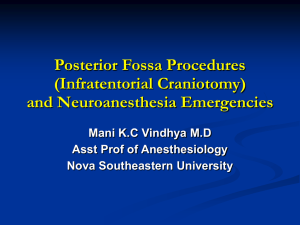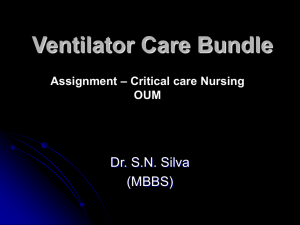Vanishing VAE Introduction Mechanical ventilation is an essential
advertisement
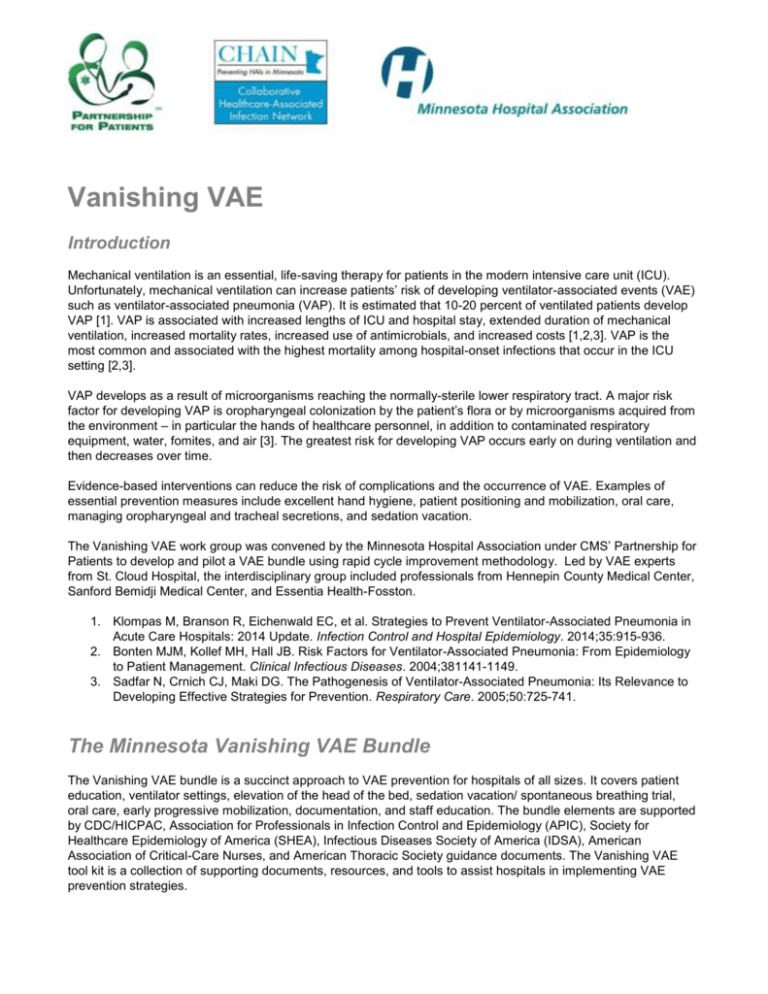
Vanishing VAE Introduction Mechanical ventilation is an essential, life-saving therapy for patients in the modern intensive care unit (ICU). Unfortunately, mechanical ventilation can increase patients’ risk of developing ventilator-associated events (VAE) such as ventilator-associated pneumonia (VAP). It is estimated that 10-20 percent of ventilated patients develop VAP [1]. VAP is associated with increased lengths of ICU and hospital stay, extended duration of mechanical ventilation, increased mortality rates, increased use of antimicrobials, and increased costs [1,2,3]. VAP is the most common and associated with the highest mortality among hospital-onset infections that occur in the ICU setting [2,3]. VAP develops as a result of microorganisms reaching the normally-sterile lower respiratory tract. A major risk factor for developing VAP is oropharyngeal colonization by the patient’s flora or by microorganisms acquired from the environment – in particular the hands of healthcare personnel, in addition to contaminated respiratory equipment, water, fomites, and air [3]. The greatest risk for developing VAP occurs early on during ventilation and then decreases over time. Evidence-based interventions can reduce the risk of complications and the occurrence of VAE. Examples of essential prevention measures include excellent hand hygiene, patient positioning and mobilization, oral care, managing oropharyngeal and tracheal secretions, and sedation vacation. The Vanishing VAE work group was convened by the Minnesota Hospital Association under CMS’ Partnership for Patients to develop and pilot a VAE bundle using rapid cycle improvement methodology. Led by VAE experts from St. Cloud Hospital, the interdisciplinary group included professionals from Hennepin County Medical Center, Sanford Bemidji Medical Center, and Essentia Health-Fosston. 1. Klompas M, Branson R, Eichenwald EC, et al. Strategies to Prevent Ventilator-Associated Pneumonia in Acute Care Hospitals: 2014 Update. Infection Control and Hospital Epidemiology. 2014;35:915-936. 2. Bonten MJM, Kollef MH, Hall JB. Risk Factors for Ventilator-Associated Pneumonia: From Epidemiology to Patient Management. Clinical Infectious Diseases. 2004;381141-1149. 3. Sadfar N, Crnich CJ, Maki DG. The Pathogenesis of Ventilator-Associated Pneumonia: Its Relevance to Developing Effective Strategies for Prevention. Respiratory Care. 2005;50:725-741. The Minnesota Vanishing VAE Bundle The Vanishing VAE bundle is a succinct approach to VAE prevention for hospitals of all sizes. It covers patient education, ventilator settings, elevation of the head of the bed, sedation vacation/ spontaneous breathing trial, oral care, early progressive mobilization, documentation, and staff education. The bundle elements are supported by CDC/HICPAC, Association for Professionals in Infection Control and Epidemiology (APIC), Society for Healthcare Epidemiology of America (SHEA), Infectious Diseases Society of America (IDSA), American Association of Critical-Care Nurses, and American Thoracic Society guidance documents. The Vanishing VAE tool kit is a collection of supporting documents, resources, and tools to assist hospitals in implementing VAE prevention strategies. VAE Prevention Bundle Resources VAE Prevention Guidance Documents Society for Healthcare Epidemiology of America (SHEA) Klompas M, Branson R, Eichenwald EC, et al. Strategies to Prevent Ventilator-Associated Pneumonia in Acute Care Hospitals: 2014 Update. Infection Control and Hospital Epidemiology. 2014;35:915-936. American Thoracic Society; Infectious Diseases Society of America. Guidelines for the management of adults with hospital-acquired, ventilator-associated, and healthcare-associated pneumonia. Am J Resp Crit Care Med. 2005;171:388-416. Available at: http://www.idsociety.org/uploadedFiles/IDSA/Guidelines-Patient_Care/PDF_Library/HAP.pdf American Association of Critical-Care Nurses. PracticeAlert. Ventilator-associated Pneumonia. http://www.aacn.org/wd/practice/docs/practicealerts/vap.pdf Tools for VAE prevention Johns Hopkins Armstrong Institute for Patient Safety and Quality CUSP for Mechanically Ventilated Patients - Ventilator Associated Pneumonia (CUSP 4 MVP-VAP) https://armstrongresearch.hopkinsmedicine.org/cusp4mvp.aspx Health Research & Educational Trust, American Hospital Association, Partnership for Patients Ventilator Associated Events (VAE) Change Package: Preventing Harm from VAE 2014 Update http://www.hret-hen.org/index.php?option=com_content&view=article&id=10&Itemid=134 IHI How-to Guide: Prevent Ventilator-Associated Pneumonia http://www.ihi.org/resources/Pages/Tools/HowtoGuidePreventVAP.aspx AHRQ Safe Critical Care Project: Testing Improvement Strategies Hospital Corporation of America (HCA) and Vanderbilt University collaborative to compare the effectiveness of two approaches to implementing evidence-based medicine practices in Critical Care. https://innovations.ahrq.gov/qualitytools/safe-critical-care-project-testing-improvement-strategies Centers for Medicare & Medicaid Services Partnership for Patients Resources: Ventilator-associated Pneumonia (VAP) http://partnershipforpatients.cms.gov/p4p_resources/tsp-ventilator-associatedpneumonia/toolventilatorassociatedpneumoniavap.html Klompas M, Anderson D, Trick W, et al. The Preventability of Ventilator-Associated Events: The CDC Prevention Epicenters’ Wake Up and Breathe Collaborative. American Journal of Respiratory and Critical Care Medicine. 2014. Published online at http://www.atsjournals.org/doi/pdf/10.1164/rccm.201407-1394OC Sedwick MB, Lance-Smith M, Reeder SJ. Using Evidence-Based Practice to Prevent Ventilator-Associated Pneumonia. Critical Care Nurse. 2012;32:41-50. Available at: http://www.aacn.org/wd/Cetests/media/C1242.pdf ARDS Prevention Guidance MacIntyre N. American Thoracic Society. Guidelines for Alternative Modes of Ventilation Used in the Management of Patients with ARDS. http://www.thoracic.org/clinical/critical-care/refractory-ards/pages/alternative-modes.php Saguil A, Fargo M. Acute Respiratory Distress Syndrome: Diagnosis and Management. Am Fam Physician. 2012;15:352-358. Available at http://www.aafp.org/afp/2012/0215/p352.html
